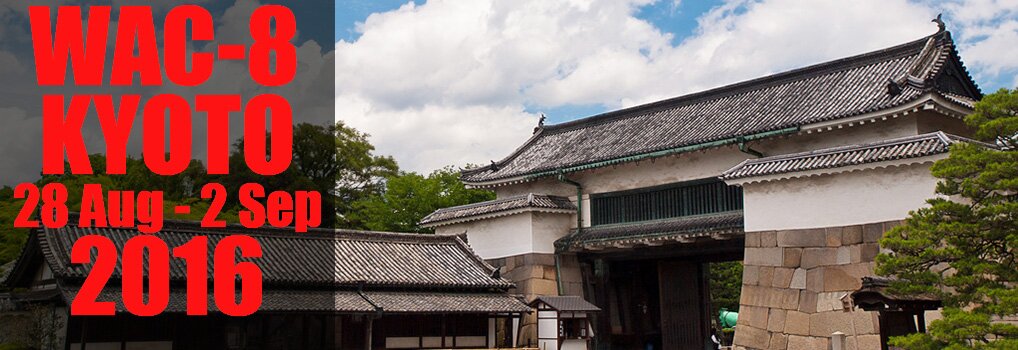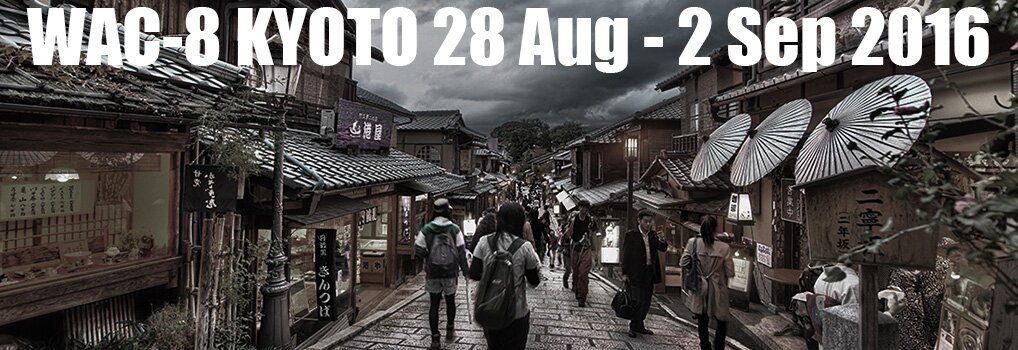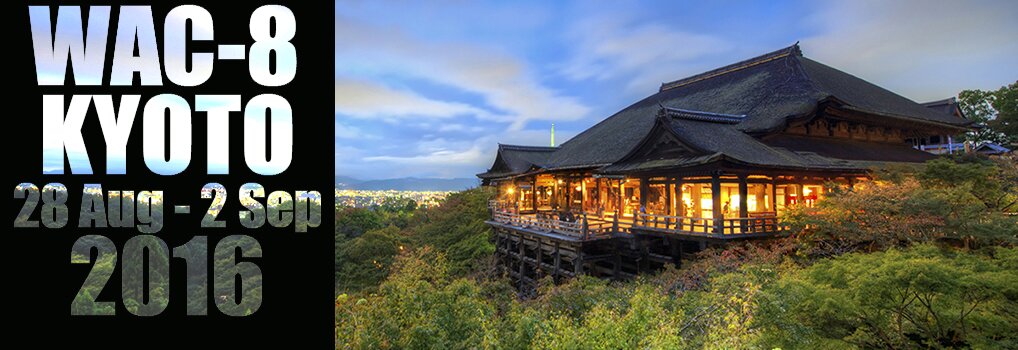| T01 | T02 | T03 | T04 | T05 | T06 | T07 | T08 | T09 | T10 | T11 | T12 | T13 | T14 | T15 |
| Theme list | Session organizers index | Accepted sessions list |
| T12. Interactions Kristian Kristiansen |
|---|
| ’Interaction’ is a covering concept for the multitude of ways prehistoric and historic communities stayed in contact, peacefully or violently. From travels to trade, from warfare to migration. To operationalize the concept we therefore need to specify the historical conditions that would either allow, constrain or stimulate various types of interaction. We also need to specify types of interaction, as each of them come with certain institutional demands: traders needs routes and protection, whether at sea or land, formed by political alliances and agreements. Thus, in order to reach a fuller understanding of ancient traveling and trading networks we need to study 1) the nature of ancient knowledge of the world (their cognitive maps, sometimes preserved in texts, more often not), 2) the nature of mobile technologies and their capacities (from ships to wagons and caravans, but also the infrastructures/logistics to support them), and 3) archaeological knowledge of the goods being traded, their origin and distribution. Finally, how do we identity the various types of interactions in the archaeological record: traders, warriors, sailors, colonizers? This is the last part of the theoretical and methodological exercise, and can be carried out once we have defined the historical contexts, the types of interaction and their institutional contexts. At a more local level interaction is also linked to an understanding of cultural boundaries, how they were crossed, and how they were maintained. At the macro level we may study how different social formations are linked together in ancient World Systems, formed by a multiple types of interactions. |
Cancelled
The monetization of ancient economies
Organiser(s): Anne Lykke (University of Vienna / Austria)
Type: Symposium
Contact: anne.lykke(at)univie.ac.at
Abstract:
The invention of coinage is closely tied to ancient Greece, emerging in Asia Minor to be developed further in mainland Greece, before spreading to the eastern Mediterranean regions and beyond from the fifth century BCE onwards. However, this medium was not limited to the Greek world. The development of monetized economies can be found in different forms in various regions, to some extent almost chronologically overlapping during the first millennium BCE: Ancient Greece, India and China. The implementation of coinage in ancient economies did not happen overnight, but depended on long processes and the development of different kinds of money used in separate value systems. This session intends to focus on the mechanisms behind the specific development of monetized economies in the different parts of the ancient world and the possible relations between these. The individual economic history and culture of all three regions demand a very high degree of specialization, wherefore these only to a limited degree receive shared attention. WAC 8 offers an excellent possibility to bring together researcher, who on the one hand share an interest in the research of ancient monetized economies and on the other wish to explore their possible common traits.
Keywords: archaeology, monetization processes, cultural interaction
Entangled, Transnational and Transcultural Approaches to the Liminal Past
Organiser(s): Louise Hitchcock (University of Melbourne / Australia) and Stuart Tyson Smith (University of California, Santa Barbara / USA)
Type: Symposium
Contact: lahi(at)unimelb.edu.au
Abstract:
This session seeks papers proposing to examine and explain interactions in the globalized world of ancient networks. We seek papers addressing areas of strong intercultural contact and negotiation of cultural identity such as borderlands and interfaces, contested spaces, hypothetical migration spaces, trading regions and emporia, maritime networks (including those connected with piracy and/or slavery), third gender perspectives, and other spatial liminalities. We welcome papers exploring these issues, which either interrogate current theoretical perspectives or apply them to robust bodies of data in prehistoric and historical archaeology. Theoretical perspectives might include (but are not limited to) transculturalism, agency theory, practice theory, entanglement, theories of transnational artifacts and object biographies, post-colonial theory, and the development of cross-cultural historical and/or anthropological models.
Keywords: Entanglement, Transnationalism, Transculturalism
The impact of Social Interaction on State Formation in the Peripheral Areas of Eurasia
Organiser(s): Kazuo Miyamoto (Kyushu University / Japan) and Ellen Van Goethem (Kyushu University / Belgium)
Type: Symposium
Contact: miyamoto(at)lit.kyushu-u.ac.jp
Abstract:
This session proposes to compare state formation and the importance of social interaction in this process in two agricultural zones in Prehistoric Eurasia, namely Western Asia and East Asia. Both agricultural zones are typified by specific crops: the agriculture of Western Asia hinges on wheat and barley, that of East Asia is based on millet and rice. Both agricultural zones maintained a center-periphery relationship with the areas outside their respective spheres, that is, with Europe to the west and North-Eastern Asia to the east. Through social interaction (including trade) between the cultural center and the periphery, the social development of the periphery itself was promoted. From this viewpoint of interaction between center and periphery, this session aims at comparing the individual state formation processes in the peripheral areas of Eurasia (i.e. in Europe and North-Eastern Asia). Papers should address the effect(s) and significance of the interaction between center and periphery while clarifying the development from chiefdom society to early states in Europe and North-Eastern Asia. Ultimately, this session aims at comparing the role of social interaction in state formation processes not only within Europe and North-Eastern Asia but also between each of these two peripheral areas.
Keywords: interaction, center, periphery
The Socio-Politics of Trade Networks in Southeast Asia.
Organiser(s): Rory Dennison (University of Illinois at Chicago / USA), Michael Canilao (University of Illinois at Chicago / Philippines ) and Laura Junker (University of Illinois at Chicago / USA)
Type: Symposium
Contact: rdenni2(at)uic.edu
Abstract:
This panel examines exchange networks and political economy in Metal Age and Early Historic complex societies of Southeast Asia, a region which is poorly represented in comparative archaeology models like world systems, social network analysis, and other approaches to the 1st to mid-2nd millennium East Asian-Indian Ocean maritime trade world. Papers will explore trade systems and power dynamics at multiple scales (including regional polities, small-scale societies forming hinterland populations, inter-regional exchange networks, and the interconnectivity between these groups) through spatial analysis, material studies of trade products, chemical analysis techniques, and historic/ contextual approaches. Particular attention will be paid to the movement of goods and ideas along these trade networks and how these items altered in use and meaning as they were traded, modified, and moved between groups. Appropriation of these trade networks by later imperial and colonial powers as they formed global trade systems is included in the discussion as context to help place the importance of this time period and region in world history.
Keywords: Exchange, Southeast Asia, Metal Age, Early Historic kingdoms, power dynamics, social networks
Silk Road – First Traces of Globalisation
Organiser(s): Rainer Feldbacher (University of Vienna / Austria), Guo Shengda (Nanjing Normal University / China), Saeedeh Mirzaei (University of Mazandaran / Iran) and Mohammad Ghamari Fatideh (University of Mazandaran / Iran)
Type: Workshop
Contact: rainer.feldbacher(at)univie.ac.at
Abstract:
The Silk Road is a system of overland and sea links stretching between the Far East and the Mediterranean. In addition to goods and technological ideas, cultural and religious ideas, including Buddhism, Zoroastrism, Manichaeism, and Nestorianism, moved along it. From the 7th Century on, Islam also spread along the Silk Road. Since many ideologies persisted beyond the exchange of goods, the Silk Road has relevance for the modern world. This symposium will attempt to break down the boundaries between humanities and social sciences through interdisciplinary studies of civilizations in Mesopotamia (e.g., Ancient Semitic philology and Oriental Archaeology), Far Eastern Studies, Ancient History and Classical Archaeology, and studies of religion, culture, social anthropology, philosophy, sociology and ethnology. The symposium will shed a multi-cultural and multi-religious light on an area that was melting pot in the ancient world.
Papers will consider both historical and ancient sites as well as to compare and contrast approaches that consider social and religious aspects and economic and ecological consequences. Using literary and artistic evidence, differences in geopolitical and social conditions in the cultural and religious spheres will be considered to analyse how the Silk Road still impacts on contemporary life across a broad region. Colleagues are invited to attend and participate in the symposium to share experiences and discuss cooperation and exchange of ideas and publication of results.
Keywords: Silk Road, religion, society
Archaeology of Interactions in the Bay of Bengal Region
Organiser(s): Kaushik Gangopadhyay (University of Calcutta, West Bengal / India), Selvakumar Veeraswamy (Tamil University, Thanjavur / India) and Coline Lefrancq (Université Libre de Bruxelles / Belgium)
Type: Workshop
Contact: k.gongo(at)gmail.com
Abstract:
The idea of the Bay of Bengal (BOB) flourished during the pre-early colonial period as a result of regular early European travellers. However, Bay of Bengal as a region was very well known in antiquity. The label eastern sea was applied in the Early historical period to the BOB. The main reason for this was the presence, along the rim of this Bay, of regions occupied by different language and ethnic groups. Archaeological record has demonstrated that regular exchange networks existed even prior to development of political networks that later including large geographical regions through military conquest. The Bay of Bengal provided routes for water transport and the typical monsoonal climate ensured growth and spread of wet rice cultivation which became the economic mainstay of the larger kingdoms. The uneven dispersal of the soil and geology also lead to artefact typologies peculiar to particular geological environments. Coastal and inland societies also interacted with each other in the context of using the resources of the sea, the plains, the hills and the forests. The interaction network in the Bay of Bengal region in antiquity has been classified as part of the ‘world system’ that covered South and South-East Asia, to which The session will bring together archaeologists, anthropologists and historians in discussing the global context of the Bay of Bengal region, within the Macro region of the Indian Ocean.
Keywords: Bay of Bengal, Interactions. Archaeology
Movement of goods and people around the South China Sea in East Indonesia from the Late Neolithic to the Metal Age
Organiser(s): Kazuhiko Tanaka (Sophia University / Japan), Eusebio Dizon (National Museum of the Philippines / Philippines) and Rintaro Ono (Tokai University / Japan)
Type: Symposium
Contact: luha_ng_kabibi(at)mwa.biglobe.ne.jp
Abstract:
Common cultural elements dating from the Late Neolithic to the Metal Age, such as jar burials, jade earrings, red-slipped pottery, shell-edge impressed pottery, incised pottery, etc., are found across the bordering regions of the South China Sea and East Indonesia, but have not been considered in a holistic way. The goal of this session is to compare and contrast the shared and uniquely local traits of burials and associated goods in order to understand the movements of people and the goods they made, used and traded within this area. Explaining these activities is especially important as a prelude for understanding the rise of later wide scale ceramic trade.
Keywords: South China Sea, East Indonesia, Neolithic, Metal Age
A Global Perspective on Southeast Asian Trade Ceramics in the Historical Period
Organiser(s): Kazuhiko Tanaka (Sophia University / Japan) and Ellen Hsieh (UCLA / USA)
Type: Symposium
Contact: luha_ng_kabibi(at)mwa.biglobe.ne.jp
Abstract:
Ceramics provide the most important archaeological evidence for understanding trading activities and cultural encounters in Southeast Asia, situated at the crossroads of maritime networks among East Asia, South Asia, Oceania and beyond. This session focuses on ceramics traded to, from or via Southeast Asia during the historical period. We will discuss three types of trade: First, Chinese and/or Japanese ceramics traded with Southeast Asia. Second, Southeast Asian ceramics traded with East Asia and West Asia. Third, Chinese and/or Japanese ceramics traded with the New World, West Asia and East Africa via Southeast Asia. The presentations in this session not only share the latest findings on historic Asian ceramic trade, but also shed light on the significant role of trade ceramics with regard to multi-directions of cultural influences as well as the identification methods which are still challenging in archaeological contexts. Our goal is to situate Southeast Asia ceramic trade in a global perspective.
Keywords: Trade ceramics, Southeast Asia, Historical Period
Commodity production and state along the East-West Cultural Corridor of mainland Southeast Asia
Organiser(s): Mamoru Shibayama (Kyoto University / Japan), Akiko Tashiro (Hokkaido University / Japan) and Elizabeth Moore (SOAS London / UK)
Type: Symposium
Contact: tashiroa(at)imc.hokudai.ac.jp
Abstract:
The session examines the role of the East-West Cultural Corridor (EWCC) in framing a the regional network for trading commodities and cultural exchange reaching from Myanmar to Thailand and Cambodia. GIS mapping of networks by chronological periods underlines the changing patterns and routes of exchange across mainland Southeast Asia, with overland routes tying into wider maritime trade networks in tandem with fluctuating political spheres. Initial channeling of this metadata into a tabular classification has begun to explore the parameters of a geo-ontology of time and space, state extent and production specializations from circa the 7th to 18th century CE.
Based on the work of Prof. Ishii in highlighting the commodity exchanges along four routes linking Myanmar and Thailand on (Ishii 2006, 2008, 2009), we welcome all participants to explore the technology and geographical domains of social production in areas including pottery, roof tiles, glass, and coins of the first and second millennium CE.
Keywords: Social Production, Interaction, Mainland of Southeast Asia




